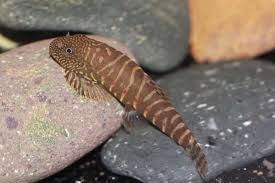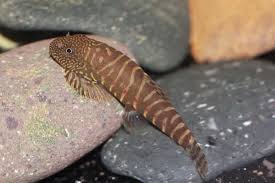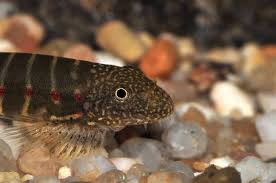Erromyzon sinensis ‘Red Spotted’ – Red‑Spotted Chinese Hillstream Loach (≈5 cm)
-
Estimated Delivery:Nov 15 - Nov 19
-
UPS Next Day Air Shipping Charges 65$

Erromyzon sinensis ‘Red Spotted’ – Red‑Spotted Chinese Hillstream Loach (≈5 cm)
📦 Product Description
The Red‑Spotted Chinese Hillstream Loach, Erromyzon sinensis, is a rare and striking hillstream loach distinguished by its subtle red spotting against a mottled body. Native to fast-flowing, oxygen-rich streams in Guangxi, China, this species is adapted to cling tightly to rocks with specialized fin morphology.
Growing to about 5 cm (2″), it brings elegance and function to a biotope tank. Its red spots and specialized grazing behavior make it a standout choice for high-current, nature‑style aquariums.
🧰 Care Instructions
Tank Setup
-
Tank Size: At least 23 US gallons (≈90 L) with a long footprint.
-
Substrate & Decor: Use smooth gravel or sand with water-worn rocks and pebbles; aged driftwood is acceptable if leached tannins have dissipated.
-
Flow & Aeration: Strong water movement is essential—aim for turnover of 10–15× tank volume per hour using oversized filter and powerheads.
-
Lighting: Moderate to bright lighting promotes algae growth on surfaces.
Water Conditions
-
Temperature: ~64–75 °F (18–24 °C)
-
pH Range: ~6.0–7.5 (or up to 8.0)
-
Water Hardness: Soft to moderately hard (up to ~12 dGH)
Diet
-
Grazes naturally on biofilm and microalgae on rocks.
-
Supplement with algae wafers, spirulina sinking pellets, flake foods, blanched vegetables (spinach, kale, zucchini), and occasional live/frozen protein such as daphnia or bloodworms.
Behavior & Tank Mates
-
Generally peaceful but may show mild territoriality among conspecifics.
-
Best kept in groups of 4 or more individuals to encourage natural behavior and reduce stress.
-
Compatible with other peaceful, fast-swimming species like Garra, Barilius, Devario, Rasbora, gobies, and non-aggressive loaches.
Maintenance
-
Stable, mature tank with established algae growth is crucial.
-
Weekly partial water changes (20–30%) to maintain pristine, oxygenated water.
-
Avoid over-cleaning algae from surfaces, as loaches rely on these for grazing.




